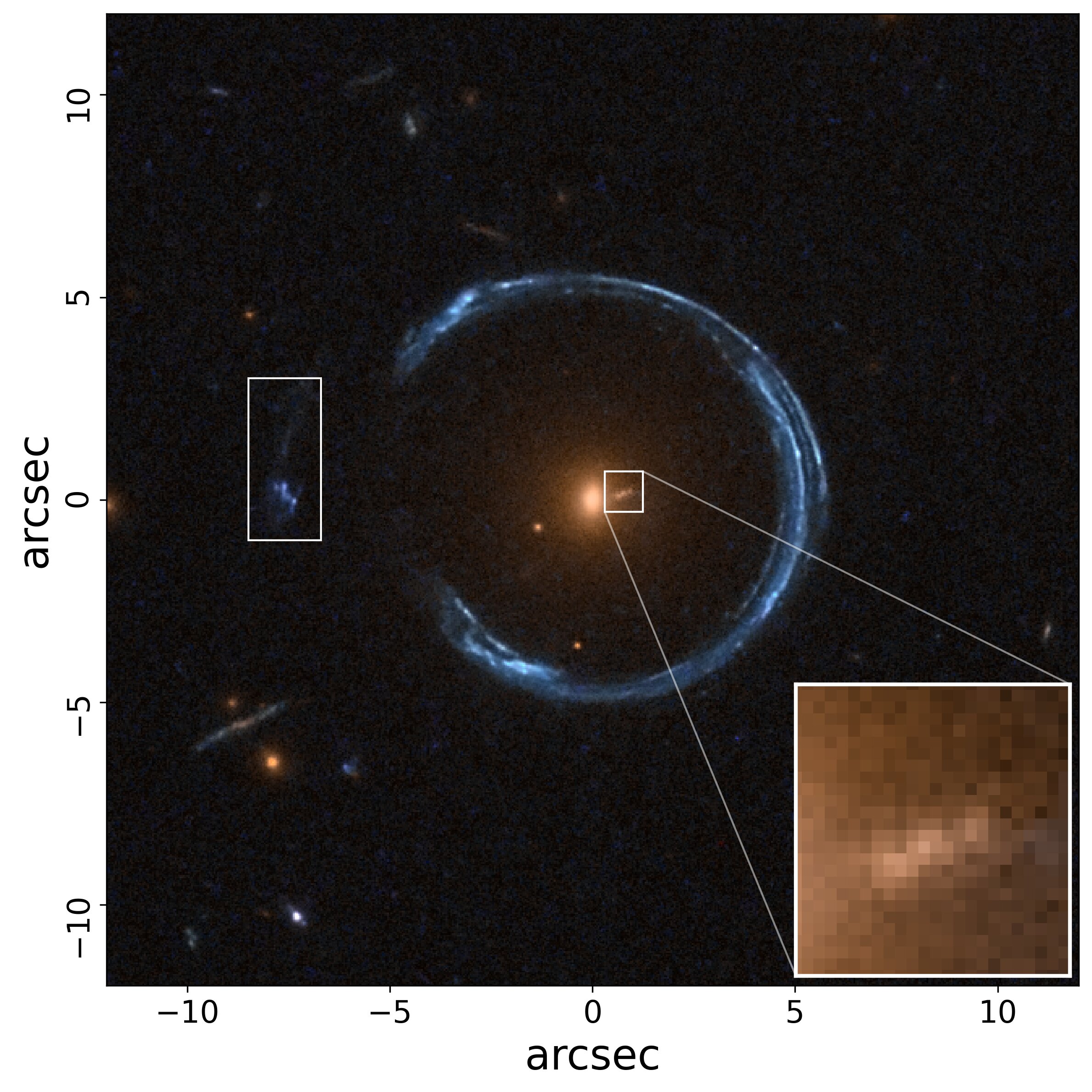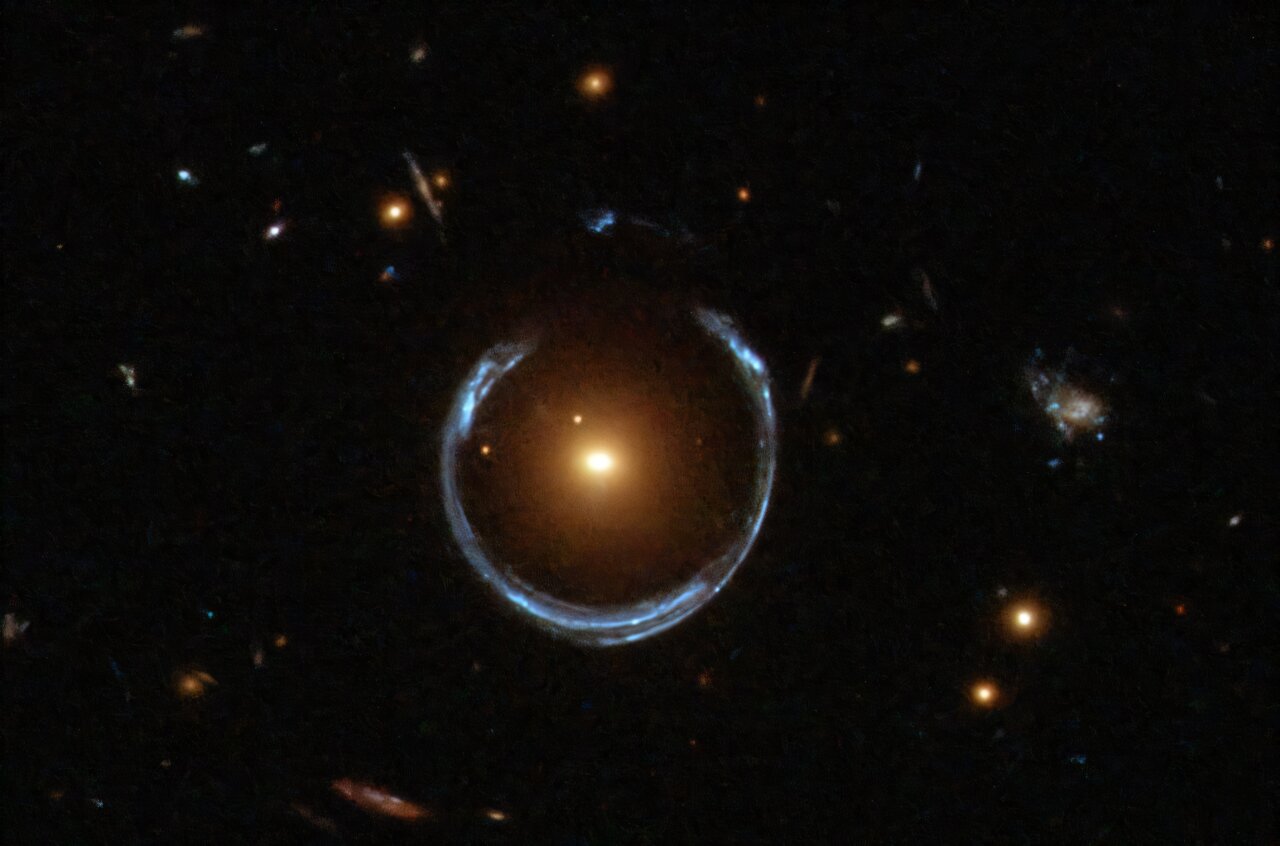Cosmic Horseshoe galaxy harbours the most massive black hole ever detected

Astronomers have discovered potentially the most massive black hole ever detected. The cosmic behemoth is close to the theoretical upper limit of what is possible in the universe and is 10,000 times heavier than the black hole at the centre of our own Milky Way galaxy.
It exists in one of the most massive galaxies ever observed—the Cosmic Horseshoe—which is so big it distorts spacetime and warps the passing light of a background galaxy into a giant horseshoe-shaped Einstein ring.
Such is the enormousness of the ultramassive black hole’s size, it equates to 36 billion solar masses, 1
It is thought that every galaxy in the universe has a supermassive black hole at its centre and that bigger galaxies host bigger ones, known as ultramassive black holes.
“This is among the top 10 most massive black holes ever discovered, and quite possibly the most massive,” said researcher Professor Thomas Collett, of the University of Portsmouth.
“Most of the other black hole mass measurements are indirect and have quite large uncertainties, so we really don’t know for sure which is biggest. However, we’ve got much more certainty about the mass of this black hole thanks to our new method.”
Researchers detected the Cosmic Horseshoe black hole using a combination of gravitational lensing and stellar kinematics (the study of the motion of stars within galaxies and the speed and way they move around black holes).
The latter is seen as the gold standard for measuring black hole masses, but doesn’t really work outside of the very nearby universe because galaxies appear too small on the sky to resolve the region where a supermassive or ultramassive black hole lies.
Adding in gravitational lensing helped the team “push much further out into the universe,” Professor Collett said.
“We detected the effect of the black hole in two ways—it is altering the path that light takes as it travels past the black hole and it is causing the stars in the inner regions of its host galaxy to move extremely quickly (almost 400 km/s).
“By combining these two measurements we can be completely confident that the black hole is real.”
Lead researcher, Ph.D. candidate Carlos Melo, of the Universidade Federal do Rio Grande do Sul (UFRGS) in Brazil, added, “This discovery was made for a ‘dormant’ black hole—one that isn’t actively accreting material at the time of observation. Its detection relied purely on its immense gravitational pull and the effect it has on its surroundings.
“What is particularly exciting is that this method allows us to detect and measure the mass of these hidden ultramassive black holes across the universe, even when they are completely silent.”

The Cosmic Horseshoe black hole is located a long way away from Earth, at a distance of some 5 billion light-years.
“Typically, for such remote systems, black hole mass measurements are only possible when the black hole is active,” Melo said. “But those accretion-based estimates often come with significant uncertainties.
“Our approach, combining strong lensing with stellar dynamics, offers a more direct and robust measurement, even for these distant systems.”
References
- Carlos R Melo-Carneiro, Thomas E Collett, Lindsay J Oldham, Wolfgang Enzi, Cristina Furlanetto, Ana L Chies-Santos, Tian Li (2025) Unveiling a 36 billion solar mass black hole at the centre of the Cosmic Horseshoe gravitational lens Monthly Notices of the Royal Astronomical Societydoi: 10.1093/mnras/staf1036 ↩